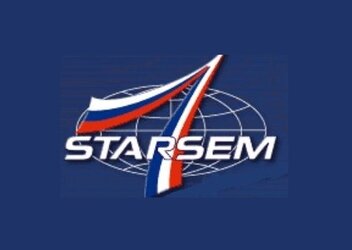GIOVE-B launch timeline: what happens and when
After a successful launch rehearsal,
| Time from liftoff (hh:mm:ss) |
Time CEST/Paris (hh:mm:ss) |
Event |
| -00:30:00 | 23:46:02 | Start of service tower retraction The tower enabling access to the Soyuz and its payload begins to move away from the launcher. |
| -00:20:00 | 23:56:02 | End of service tower retraction |
| -00:07:00 | 00:09:02 | Autonomous upper stage initialised and switched to internal power Fregat is prepared for launch and running on battery power. |
| -00:06:00 | 00:10:02 | Fregat autonomous upper stage declared ready to launch |
| -00:05:20 | 00:10:42 | Key on start Final count down operations. |
| -00:02:35 | 00:13:27 | Umbilical drop-off The umbilical links between the launcher and tower are disconnected. |
| -00:02:05 | 00:13:57 | Lift-off command (launch non-reversible) The command for lift off is given. |
| 00:00:00 | 00:16:02 | Lift-off |
| 00:00:08 | 00:16:10 | End of vertical path, start of pitch turn After climbing vertically for eight seconds, the Soyuz turns downrange. |
| 00:01:52 | 00:17:54 | Transition of the lateral boosters to the intermediate thrust level The four boosters attached to the Soyuz central core reduce power in preparation for separation. |
| 00:01:58 | 00:18:00 | First stage separation The four first stage boosters separate and fall away. |
| 00:04:13 | 00:20:15 | Fairing jettison The fairing, or nosecone, that has protected |
| 00:04:46 | 00:20:48 | Third stage ignition The engine of the Soyuz third stage is started. |
| 00:04:47 | 00:20:49 | Second stage separation The lower central core of the Soyuz drops away. |
| 00:08:49 | 00:24:51 | Fregat separation The Soyuz third stage separates. Fregat and |
| 00:09:49 | 00:25:51 | Start of Fregat main engine first burn To reach the final orbit, several manoeuvres are needed using the re-ignitable Fregat main engine. |
| 00:10:08 | 00:26:10 | Fregat main engine cut-off The Fregat main engine is turned off. Fregat and |
| 00:20:16 | 00:36:18 | Exit from Russian station coverage area Fregat and |
| 00:38:15 | 00:54:17 | Start of Fregat main engine second burn The second burn occurs autonomously, out of sight of the ground stations. There is no telemetry data. |
| 00:48:05 | 01:04:07 | Fregat main engine cut-off |
| 00:48:15 | 01:04:17 | Injection onto the transfer orbit Fregat and |
| 00:51:56 | 01:07:58 | Entry into ESA Santiago station coverage area |
| 01:52:07 | 02:08:09 | Re-entry into Russian ground stations coverage area |
| 02:07:40 | 02:23:42 | Start of telemetry reception for second burn status Information about the second burn is downloaded from Fregat |
| 02:27:40 | 02:43:42 | End of telemetry reception |
| 03:36:05 | 03:52:07 | Fregat main engine third burn Fregat uses its main engine to transition from transfer orbit to |
| 03:40:05 | 03:56:07 | Fregat main engine cut-off |
| 03:45:05 | 04:01:07 | The Soyuz mission is complete. |
| 04:13 | 04:29 | Start of solar array deployment |
| 05:12 | 05:28 | Confirmation of solar panel deployment The solar arrays that generate power for the spacecraft have been successfully unfolded and are generating power. |
| 06:34 | 06:40 | Stable Sun pointing after separation Confirmation that |
| 08:14 | 08:30 | Transition to Earth pointing mode |















 Germany
Germany
 Austria
Austria
 Belgium
Belgium
 Denmark
Denmark
 Spain
Spain
 Estonia
Estonia
 Finland
Finland
 France
France
 Greece
Greece
 Hungary
Hungary
 Ireland
Ireland
 Italy
Italy
 Luxembourg
Luxembourg
 Norway
Norway
 The Netherlands
The Netherlands
 Poland
Poland
 Portugal
Portugal
 Czechia
Czechia
 Romania
Romania
 United Kingdom
United Kingdom
 Slovenia
Slovenia
 Sweden
Sweden
 Switzerland
Switzerland

































